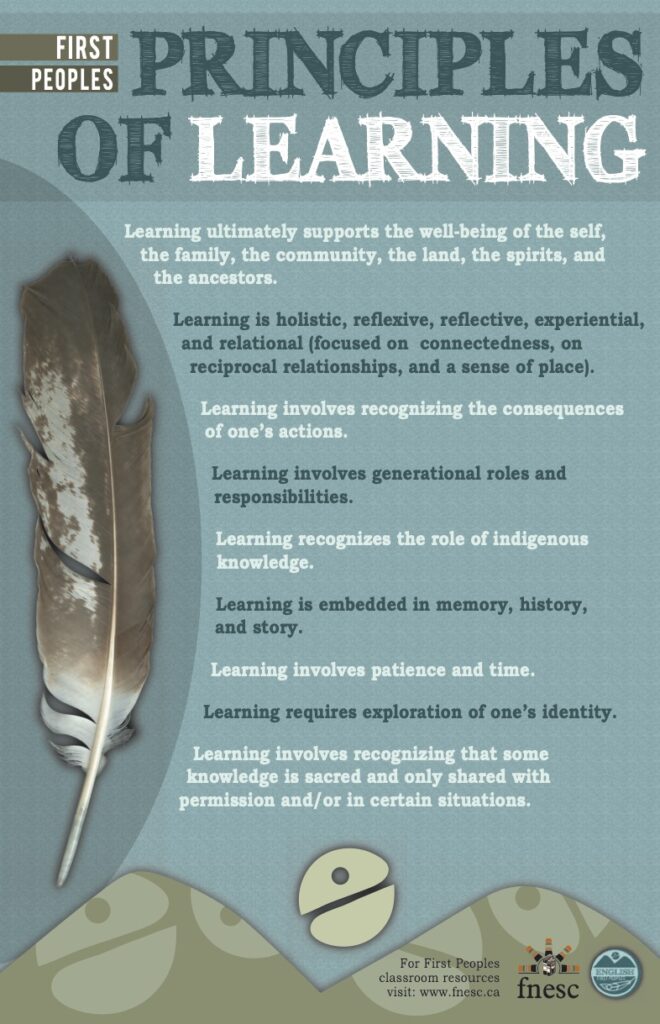
As generative AI becomes increasingly present in our classrooms, many educators are looking for ways to use it meaningfully, and responsibly. For some – including myself – working in a concept-based inquiry-driven classroom, where the First Peoples Principles of Learning (FPPL) are foundational, there are many important and complex questions that come forward.
Using generative AI might seem like a helpful bridge into FPPL-aligned practice, and for some educators, it can even make the FPPL feel more approachable. Generative AI feels like a neutral tool that can support learning and maybe take the pressure off, or fill in the gaps.
But truthfully – generative AI is not neutral. It reflects the dominant narratives, data bias, and cultural blind spots. When it is used without reflection or community grounding, it can do more harm than good, especially when it works on Indigenous culture, identity, or knowledge.
This section is here to help us pause, think critically, and ask better questions.
The First Peoples Principles of Learning remind us that:
- Learning is holistic, reflexive, reflective, experiential, and relational
- Learning involves generational roles and responsibilities
- Learning is embedded in story, memory, and identity
- Learning involves recognizing that some knowledge is sacred and only shared with permission and/or in certain situations
When we use generative AI in a classroom that honours the FPPL, we must ensure it supports rather than replaces this sacred, relational way of learning.
Technology can support us, but land and story need to lead us. Use this space as a launchpad for your own thoughtful integration and as a reminder that relational, respectful learning can never be outsourced to a machine.
A note on humility and growth
This is a topic which I approach with deep care and ongoing humility. What I’ve shared here only scratches the surface. Everyday, I am still learning, I try my best, ask questions, and practice cultural humility. I am deeply thankful for the guidance, feedback, and conversations I’ve had and will continue to have with Indigenous educators, community members, and colleagues.
If you are also learning – welcome. If you have knowledge to share – thank you. Let’s commit to growing together in ways that centre on respect, relationship and responsibility.
Recent Comments